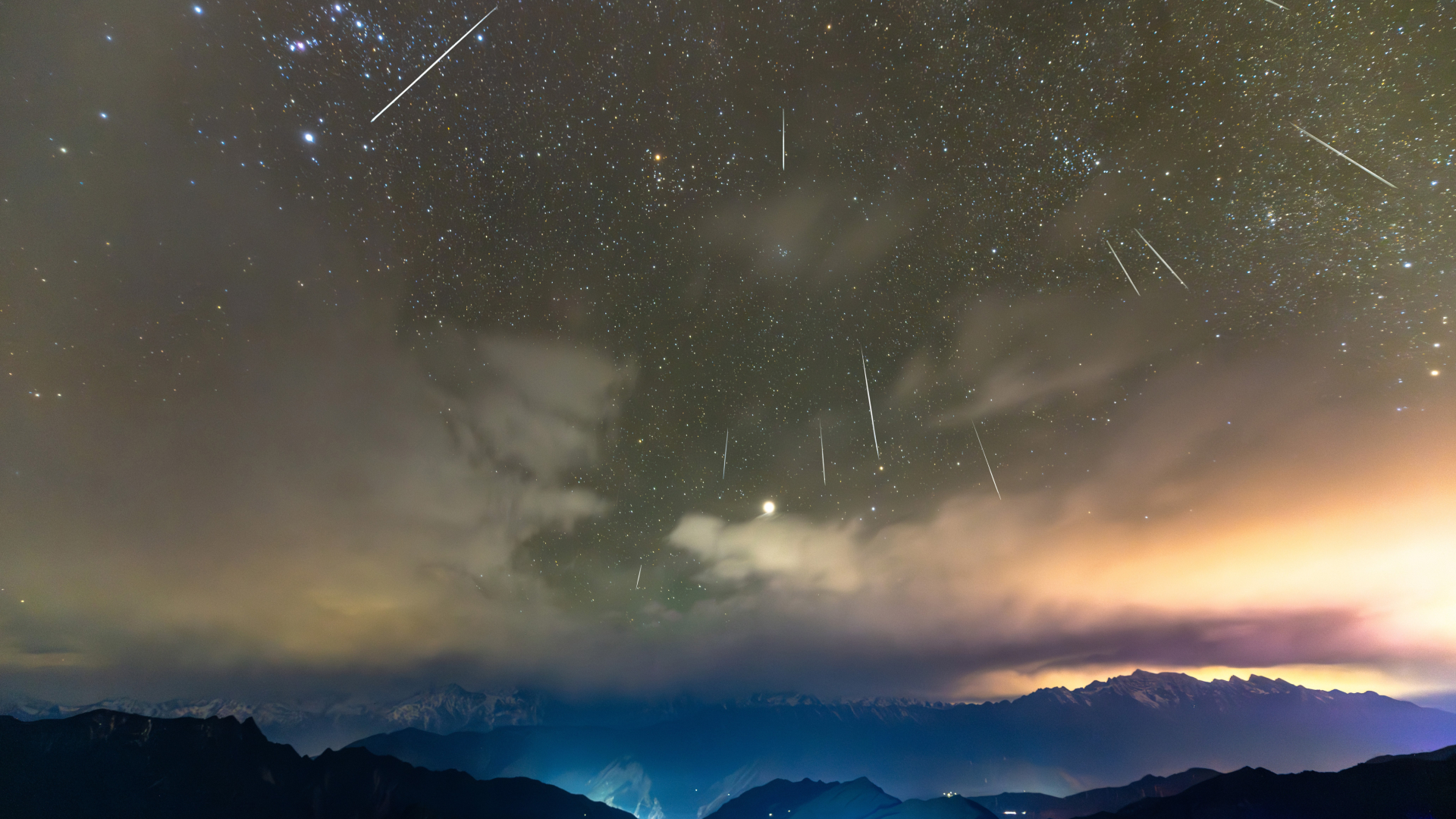
The Geminid meteor shower is one of the most prolific annual meteor showers, impressing skywatchers year after year.
It is possible to see up to 120 meteors per hour under dark conditions when the Geminids peak each year.
Unfortunately for skywatchers this year, the almost full moon could interfere with shooting star-hunting efforts when the Geminid meteor shower peaks overnight on Dec.13 -14. But while the moonlight will wash out the fainter meteors, it'll still be possible to see some of the bigger and brighter meteors, so it's definitely worth a look if you have clear skies.

Keep up to date with what you can see tonight with our night sky live blog.
The Geminid meteor shower is caused by debris from near-Earth asteroid 3200 Phaethon — a peculiar asteroid that exhibits comet-like behavior and completes its orbit around the sun roughly every 1.4 years.
3200 Phaethon may have collided with another celestial object long ago, resulting in a stream of particles that Earth passes through, giving rise to the Gemind meteor shower. As Earth moves through the trail of particles left behind by this space rock, these "asteroid fragments" ignite upon entering our atmosphere, creating striking streaks of light.
Gemind meteors are usually quite easy to see as they appear bright and intensely colored according to the American Meteor Society. The meteors will appear to radiate from the constellation Gemini which will be well placed high in the northern hemisphere sky from about 10 p.m. local time. Due to the bright 92% illuminated moon at the time of the Geminds peak, I recommend standing with your back to the moon and facing the direction of the darkest section of the sky for the highest chance of spotting some Geminid meteors.

Dress warmly, or even bring a hot beverage, get comfortable and give your eyes time to adjust. With patience and a little luck, you might be able to see some of the year's best meteor showers despite the moon.
If you can't catch the Geminds peak don't worry, the meteor shower is active until around Dec. 24 so there is plenty of time to catch a glimpse of the last prolific meteor shower of the year.
Clear skies and good luck.
If you want to try to take photos of the Geminids or any other meteor shower on camera, we can help you learn and buy what you need. Check out our how to photograph meteors and meteor showers guide and if you need imaging gear, consider our best cameras for astrophotography and best lenses for astrophotography.
Editor's note: If you capture an amazing view of the Geminid meteor shower or any other night sky view that you would like to share with Space.com for a possible story or gallery, send images and comments to: spacephotos@space.com.







